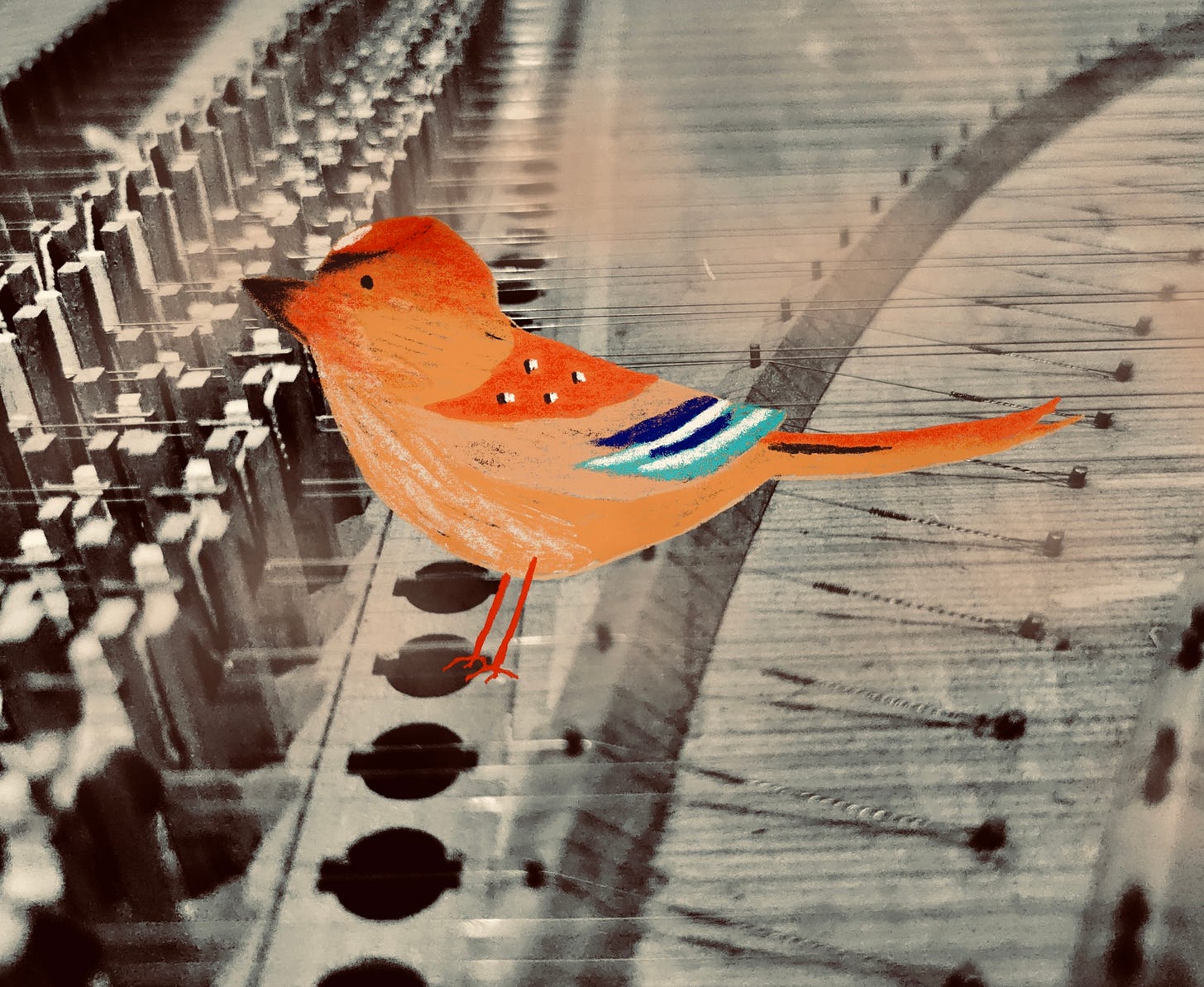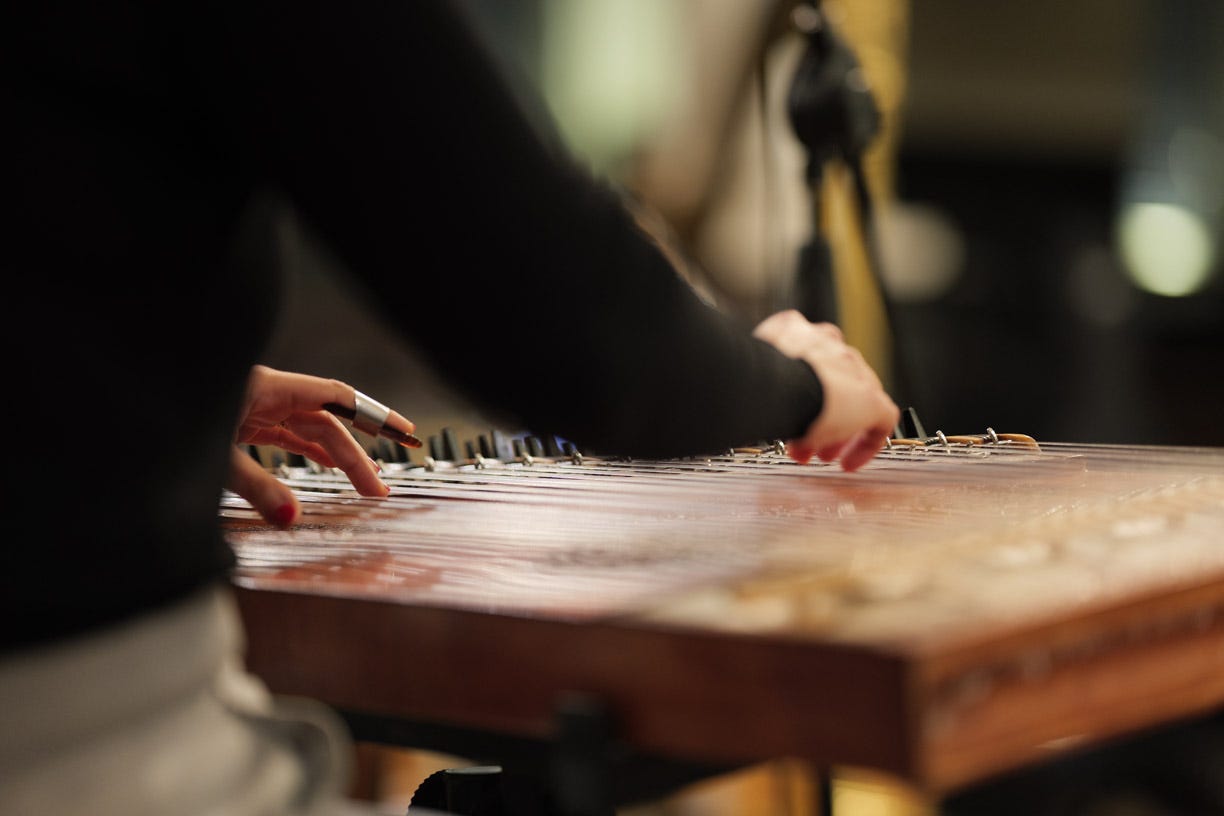I am listening to …
a tribute to Pauline Viardot, with mezzo soprano Marina Viotti, Christophe Rousset and Les Talens Lyriques. If you have yet to discover Marina or Pauline, one of the great sopranos of the mid-19th century, and a fiercely independent artist, give this a listen and also check out The Europeans by Orlando Figes, which has Pauline, her impresario husband and the writer Ivan Turgenev at its centre. Focusing on their individual biographies as well as their relationship(s) whilst carefully dissecting how the rise of the railway and subsequent travel craze, combined with new printing methods, mass communications and new laws of national and international copyright created a perfect environment for the arts to flourish.
I am looking at …
the harpsichord. Bach Club have a concert coming up in London on the 17th March, which will be all about the HARPSICHORD, linking the past to the present and to a promising future. Soundworlds will not collide but meet at eye level.
Bach Club commissioned composer Héloïse Werner, a rising figure on the contemporary music scene (and a lovely human), and she not only came up with a new piece for the harpsichord and small ensemble, but also the title of the concert: ‘a beautiful object’. In this, her first piece for the harpsichord, Héloïse approaches the instrument, quite literally, with care and curiosity, before diving in to discover and explore the very nature of this ‘beautiful object’ in her distinct style. Also included in this concert is music by Purcell/Britten/Siwczak, fabulous Baroque composer Elisabeth de la Guere, Manuel de Falla, and Stephen Dodgson.
Paweł Siwczak, harpsichordist and Bach Club’s artistic director, is the host during the concert, guiding the audience, and introducing them to his instrument and each piece in his relaxed style.
Pawel and I have this ongoing discussion on how to open up concerts and repertoire without turning them into lecture recitals … how best to inform and entertain newbies and seasoned concert-goers at the same time.
Not every concert lends itself to this format, but to stay relevant and open to new audiences it might be helpful for the performers on stage to consider themselves as hosts of the evening. The venue is your ‘living room’ tonight and you want everyone to feel comfortable and to enjoy themselves. So, introducing your colleagues, the programme you have put together, the backstory of a chosen piece, especially if new or unfamiliar to many, seems like the thing to do.
I believe that in this way we not only build a relationship between the audience and the musicians on stage, we help form and support a connection between the audience and the music. And it is exactly this connection we love, and which is such an essential part of performing in public. And when it happens, you feel it on stage, you feel it in the auditorium, and you can even feel it backstage.
I am reading …
Fifty Sounds by Polly Barton, a very personal dictionary of Japanese, in which she reflects on how she learned the language.
Barton describes the beginning as a kind of “sensory bombardment”, being physically taken over by a language that turns your head into an “echo chamber”, filled with not just new words and rules but a whole new set of ideas described within.
It feels true to say that before I properly spoke or understood Japanese, … it assumed the role of a constant internal soundtrack. … When I closed my eyes at night I was souped in them, sounds that hovered between known and unknown, as if comprehensibility were not in fact the currency in which my brain dealt any more, and what was being processed was rather the rhythms.
In another chapter Barton goes on to describe the sense of freedom in speaking another language, as certain constructs, constraints and social codes fall away when trying on different words and sounds. There is this “hallowed period” when learning a foreign language, where we understand the meaning but are not yet affected by its context.
I don’t think it is too far fetched to see similarities with diving into unknown sound worlds as a musician or listener. Listening to new soundscapes, to unfamiliar contemporary music, I definitely feel like hovering between the known and the unknown, and I love how Barton describes this stage. It is like understanding some words but not quite knowing the grammar; just happily ‘souped’ in the sound.
This ‘hallowed period’ can also make you leave behind certain inhibitions and constraints, just like learning a new language. I have been to some fantastic concerts where genres were mixed and musical cultures happily inspired each other. A lot of the times it was an absolute ear opener, and so much fun.
Maybe I can take Kate Molleson’s quote from her fantastic book Sound within Sound a little out of context and say that “if classical music is serious about wanting change, it needs to reclaim its innate and vital sense of adventure” and go travel.
and I like …
this recording approach, realised by Daniel Pioro on his latest album Saint Boy
“It was captured in an acoustically dead room with a whole array of mics – next to my face, under the violin, almost like a scientific set-up. The idea was to capture every tiny inflection and overtone and recreate what it is like for a fiddle-player having their ear right up against the instrument. The Tartini was my big thing of saying, ‘Come and sit inside the violin and be terrified with me – get excited with me.’ (Daniel Pioro talking about Tartini’s Violin Sonata ‘Devil’s Trill’ with BBC Music Magazine)
Thanks for reading,
Kirsten
PS There is a lot of reading, listening, research and travel involved in my line of work; I stumble across many interesting things, ideas and lots of music I can't just leave behind so I decided to write about them and share with you.






